Have you ever noticed birds swooping around the lights while enjoying your favorite team play on summer evenings? St. Louis Cardinals fans have seen them for years.
Nighthawks feed off the buffet of insects gathering around the lights, inhaling them in droves. Streetlights and billboards are more places you may notice these aerial acrobats dining out in cities and suburbs. Watch for them flying just above treetops in the country. Flashing white wing patches and bat-like moves are a few ways to identify them in flight. They've also been called bullbats, mosquito hawks, and goatsuckers. Nighthawks are perhaps best known for their deep aerial dives which create a booming sound as air rushes over their wings as while pulling out of their dives before reaching ground. This sounds like the whoosh of a high-speed race car passing by for a brief moment. Just before dawn and at dusk are the best times to catch the action. See and hear them in action in the video below.
Nighthawks also make a distinct peent call that may help you locate them. But once they reach landfall, they will disappear into the landscape. Blink and you will miss them. They are so fully blended in cryptic shades of brown, white, and grey, that they are nearly impossible to find. This makes them a difficult species to count in bird surveys. And possibly why they do not build nests.
Nesting
Nighthawks lay eggs on the ground or occasionally, on flat gravel roofs. The surface may be sand, mud, rock, leaves, wood chips, moss, among others. They may raise one or two broods with a couple of eggs each. The young are fed regurgitated insects by both parents. The menu may include ants, beetles, moths, flies, crickets, and others with some vegetation in the mix as well. Females incubate the eggs between feeding flights.
In early fall around September, large flocks may be seen foraging and migrating. Nighthawks have one of the longest migration routes on the continent.
Quick Takes
Nighthawks dive for territorial purposes and to attract females. Upon landing, males will puff their white throat patch and wag their tail to attract a mate.
Nighthawks feed in mid-air. Forward facing whiskers help channel insects into their mouths in flight.
Nighthawks are well camouflaged on the ground and do not build nests.
Nighthawks are not hawks. Their closest Missouri relatives are whip-poor-wills and Chuck-will's-widows.
Nighthawks often perch parallel with branches to conceal themselves.
Nighthawks are common summer residents but are declining throughout their range due to loss of habitat and food.
Discover more about Common Nighthawks in our field guide.
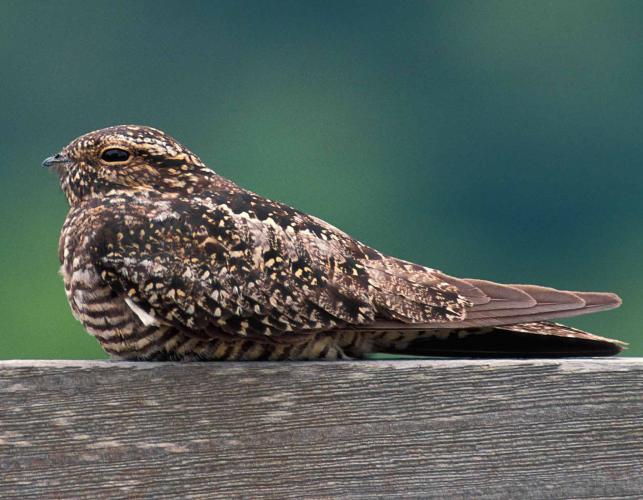
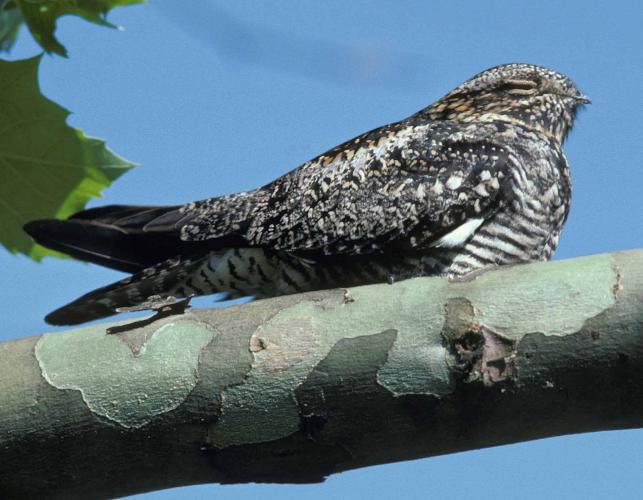
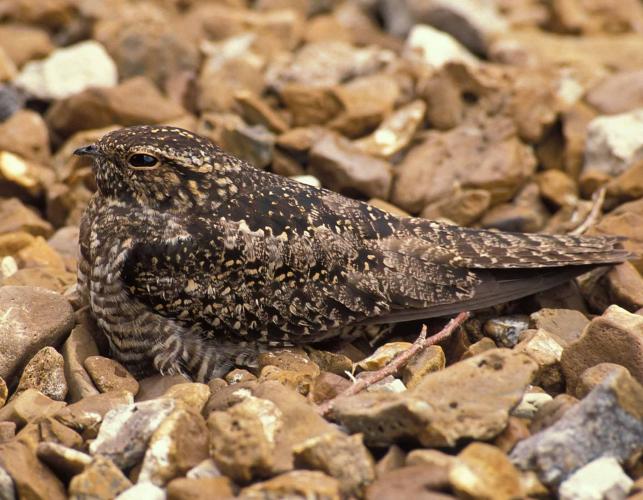
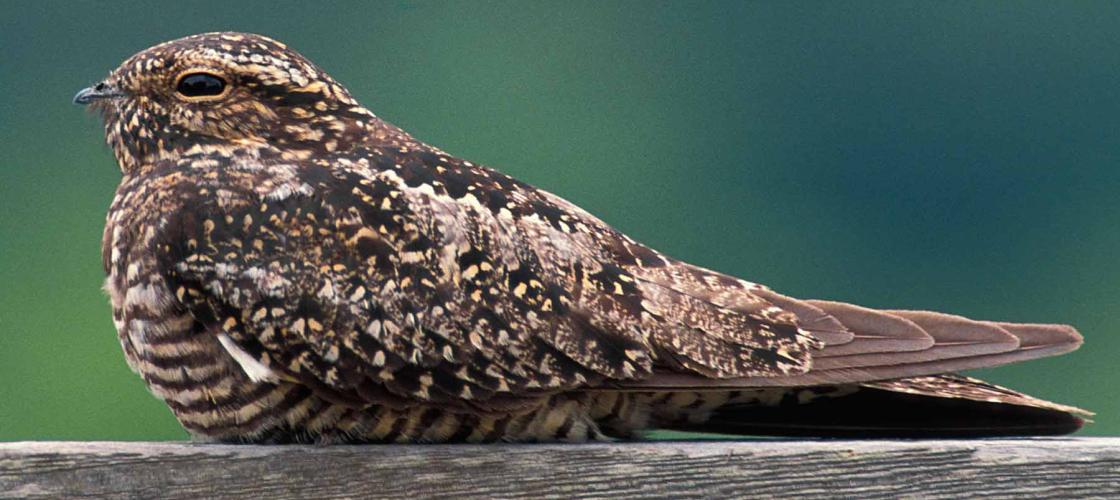
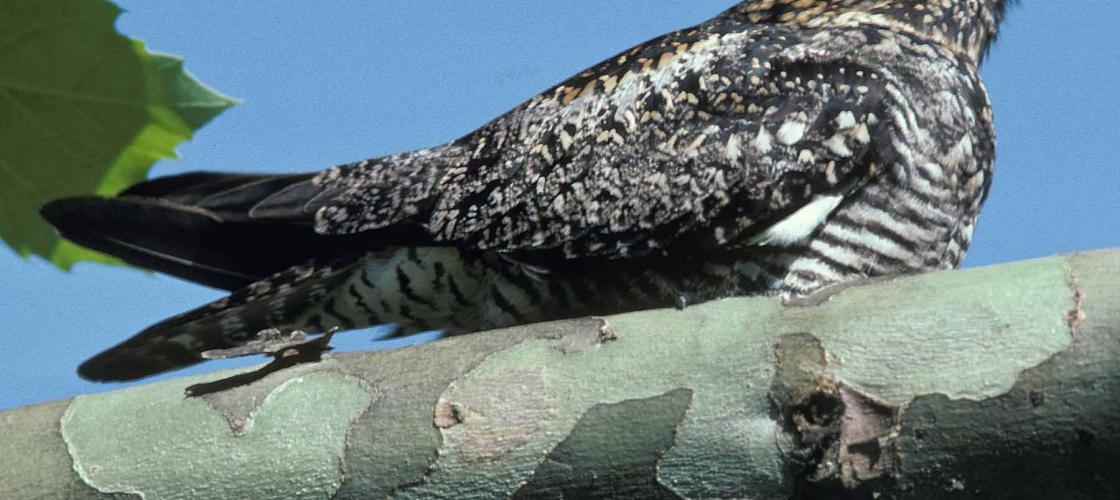
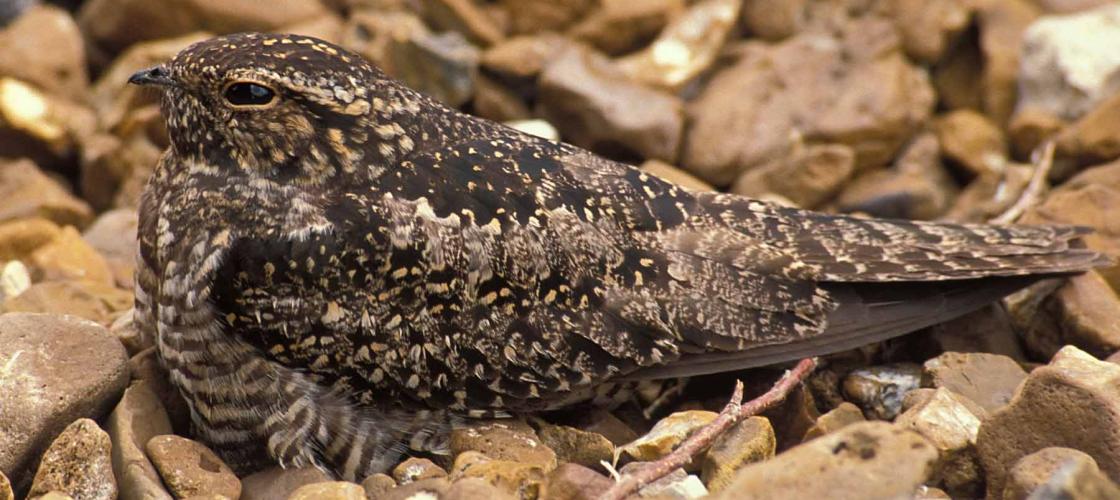
Recent Posts
























